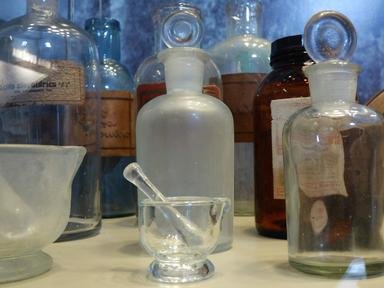Quiz Answer Key and Fun Facts
1. Which member of group 1 of the periodic table (the alkali metals) is extremely rare, very unstable and named after the home country of its discoverer, Marguerite Perey?
2. Hassium, officially discovered in 1984 by a team from the Institute for Heavy Ion Research in Darmstadt, Germany, is named after the German state of Hesse. In what section of the periodic table does this element appear?
3. The element with the atomic number 95 can be found in many homes across the world as a small, but important component of smoke detectors. Armed with the information that it was named after a continent, can you pick it out from the options below?
4. Scandium, named after the Latin name for the European region of Scandinavia, is used in a disparate array of manufactured items including aeroplane parts, metal halide lamps and lacrosse sticks. If you had to pick out some scandium to make a handle for your new lacrosse stick, which of the following characteristics should you be looking for?
5. Which element that appears in group 2 of the periodic table is named after a village in Scotland and is known, like most of its fellow group-mates, for being extremely reactive with water?
6. If you were asked to name a precious metal, you'd probably come up with gold, silver and platinum pretty easily - but what is the name of the element named after Russia that is also classed as a precious metal?
7. Rhenium might be named after the Rhine, a river in central Europe, but it would be very hard to obtain a river of rhenium as it has one of the highest melting points of all elements. At which of these temperatures would rhenium be in liquid form?
8. The metal that has the atomic number 12 is essential to the health of the human body and is named after an area of Greece. What is it called?
9. Hafnium, which was discovered in and named after the city of Copenhagen, is generally found in the ores of which other element?
10. The Swedish village of Ytterby has the honour of having four different chemical elements all named after it. Three of the four are members of the lanthanide series with atomic numbers between 57 and 71, but one (with atomic number 39) is classified as a transition metal. Which one?
Source: Author
Fifiona81
This quiz was reviewed by FunTrivia editor
rossian before going online.
Any errors found in FunTrivia content are routinely corrected through our feedback system.
